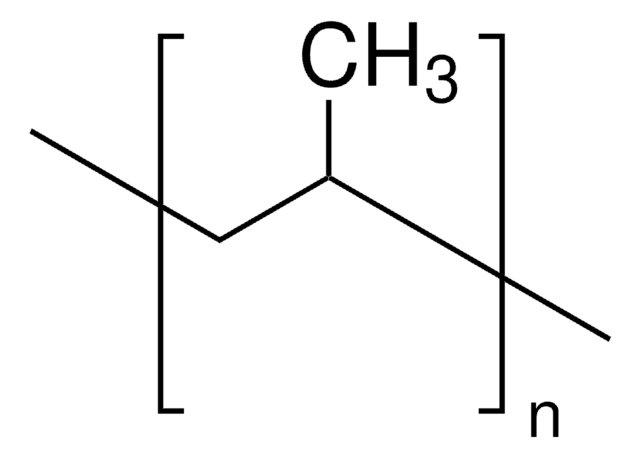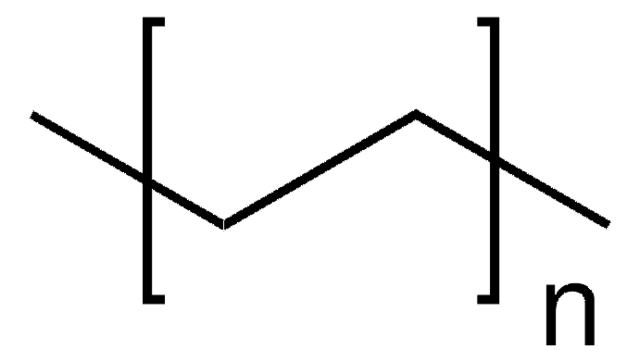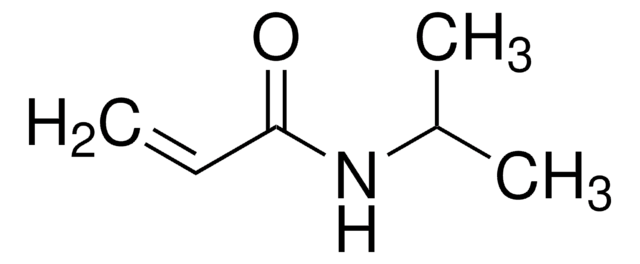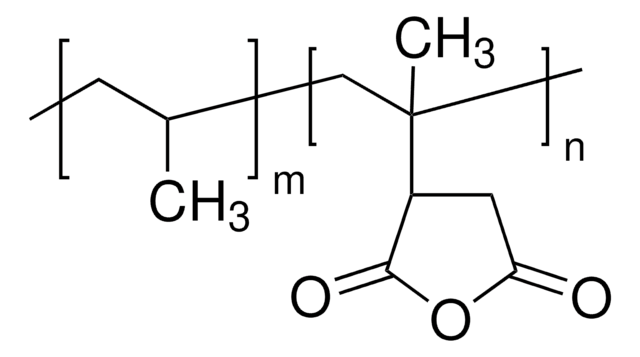428116
Polypropylene
Isotactic, average Mw ~12,000, average Mn ~5,000
Sinónimos:
PP
About This Item
Productos recomendados
Nivel de calidad
Formulario
pellets
mol peso
average Mn ~5,000
average Mw ~12,000
viscosidad
6.0 poise(190 °C, Brookfield Thermosel)(lit.)
mp
157 °C
número de ácido
<0.05 mg KOH/g
temperatura de transición
softening point 163 °C (ring and ball, ASTM E 28)
densidad
0.9 g/mL at 25 °C (lit.)
cadena SMILES
CC=C
InChI
1S/C22H42O3/c1-2-3-4-5-11-14-17-20-21(25-20)18-15-12-9-7-6-8-10-13-16-19-22(23)24/h20-21H,2-19H2,1H3,(H,23,24)/t20-,21+/m1/s1
Clave InChI
NSYDMBURIUSUDH-RTWAWAEBSA-N
¿Está buscando productos similares? Visita Guía de comparación de productos
Categorías relacionadas
Aplicación
Propiedades físicas
Código de clase de almacenamiento
11 - Combustible Solids
Clase de riesgo para el agua (WGK)
WGK 3
Punto de inflamabilidad (°F)
Not applicable
Punto de inflamabilidad (°C)
Not applicable
Equipo de protección personal
Eyeshields, Gloves, type N95 (US)
Elija entre una de las versiones más recientes:
¿Ya tiene este producto?
Encuentre la documentación para los productos que ha comprado recientemente en la Biblioteca de documentos.
Los clientes también vieron
Global Trade Item Number
| Número de referencia del producto (SKU) | GTIN |
|---|---|
| 428116-1KG | 4061832104805 |
| 428116-250G | 4061832104812 |
Nuestro equipo de científicos tiene experiencia en todas las áreas de investigación: Ciencias de la vida, Ciencia de los materiales, Síntesis química, Cromatografía, Analítica y muchas otras.
Póngase en contacto con el Servicio técnico





